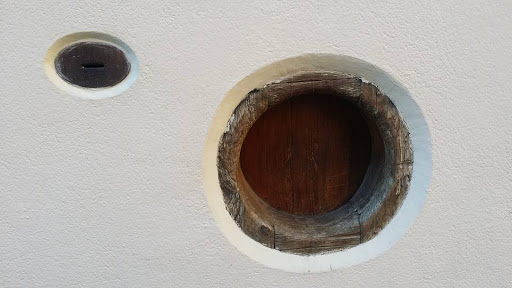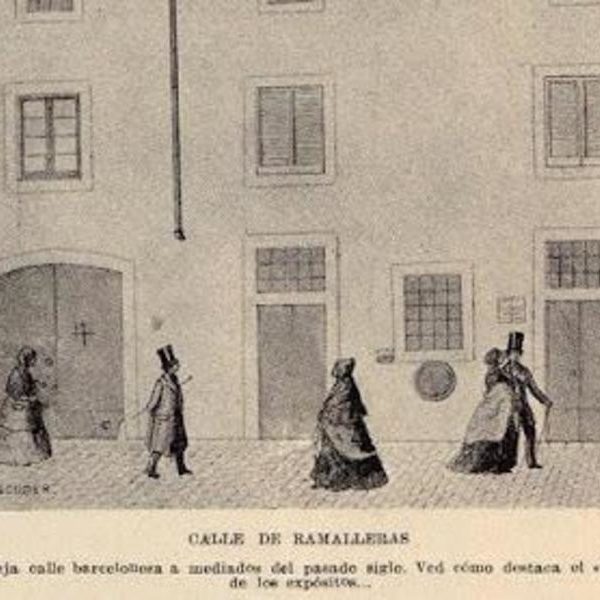To lovers of Barcelona city will surely love discovering the less commercial and superficial side of Barcelona. You stay with me?
Surely you are wondering why La Oficina d’Atenció Ciutadana de l’Ajuntament de Barcelona (the Barcelona City Council Citizen Service Office) has two strange holes next to the entrance door.
Well, today the building belongs to the Barcelona City Council, but behind those walls, until the 1930s, was the Casa de la Misericòrdia (the House of Mercy), a convent run by the Sisters of Charity.
But did you know that Casa de la Misericòrdia (the House of Mercy) still exists? I will tell you about it a few lines below. First, let me explain what those two strange holes were for.
The holes in the wall
If you go to Carrer de les Ramelleres (Ramelleres street), in the Plaça de Vicenç Martorell (Vicenç Martorell square), you will see two holes, one large and round made of wood, and the other is a slit of oxidized brass. The first one was used to give the baby up for adoption, and the second one to give some money for his support, at least for the first months of the baby’s life.

Mothers who could not take care of their babies, went to the Casa de la Misericòrdia (the House of Mercy), left the baby in the hole, called torn dels orfes (orphans’ lathe), rang the bell, left some money and the wheel turned automatically. Then, the baby fell into the hands of the nuns who did as much as possible to take care of them and give them a future full of life and hope.
It wasn’t just the nuns who cared for the people. Diego Pérez de Valdivia, a well-known man in Barcelona, dedicated his life to charity. In a minute you will get to know more about him.
The nuns who cared for these babies baptized them with the name of the saint of that same day and the surname Expósito. For example, if the baby fell into the hands of the nuns on Santa Ana’s day, the baby was called Ana Expósito.
The House of Mercy today
As I metioned before, in Barcelona there is La Fundación Casa de la Misericordia (the House of Mercy Foundation); here donations can be made to cover the most basic needs of orphaned children, such as a place to live, food, education, among others.
Although it bears the same name as the convent since the 1930s, this Foundation dates back to 1581 when a priest and professor at the University of Barcelona, Diego Pérez de Valdivia, founded an asylum to house homeless people who slept in the street of the Catalan Capital. It is located very close to the torn dels orfes (orphans’ lathe), precisely on Calle Elisabets (Elisabets street) and, as in the past, it welcomes not only homeless people, but also children from 4 to 18 years old at La Residencia Infantil.

A spiritual zone
It seems that this zone in Barcelona is especially sensitive to the attention and care of children, but also adolescents. On the same Elisabets street there is a student residence called Residencia Universitaria Elisabets (Elisabets University Residence) that welcomes all those university students who want to study spanish language and live an experience in Barcelona. Of course, it is a female residence run by Dominicas Anunicatas, who guide the university students in their training through human, ethical, solidarity and spiritual values.
In short, an area of the metropolitan city tinged with spirituality and mercy. Impressive right?

No responses yet